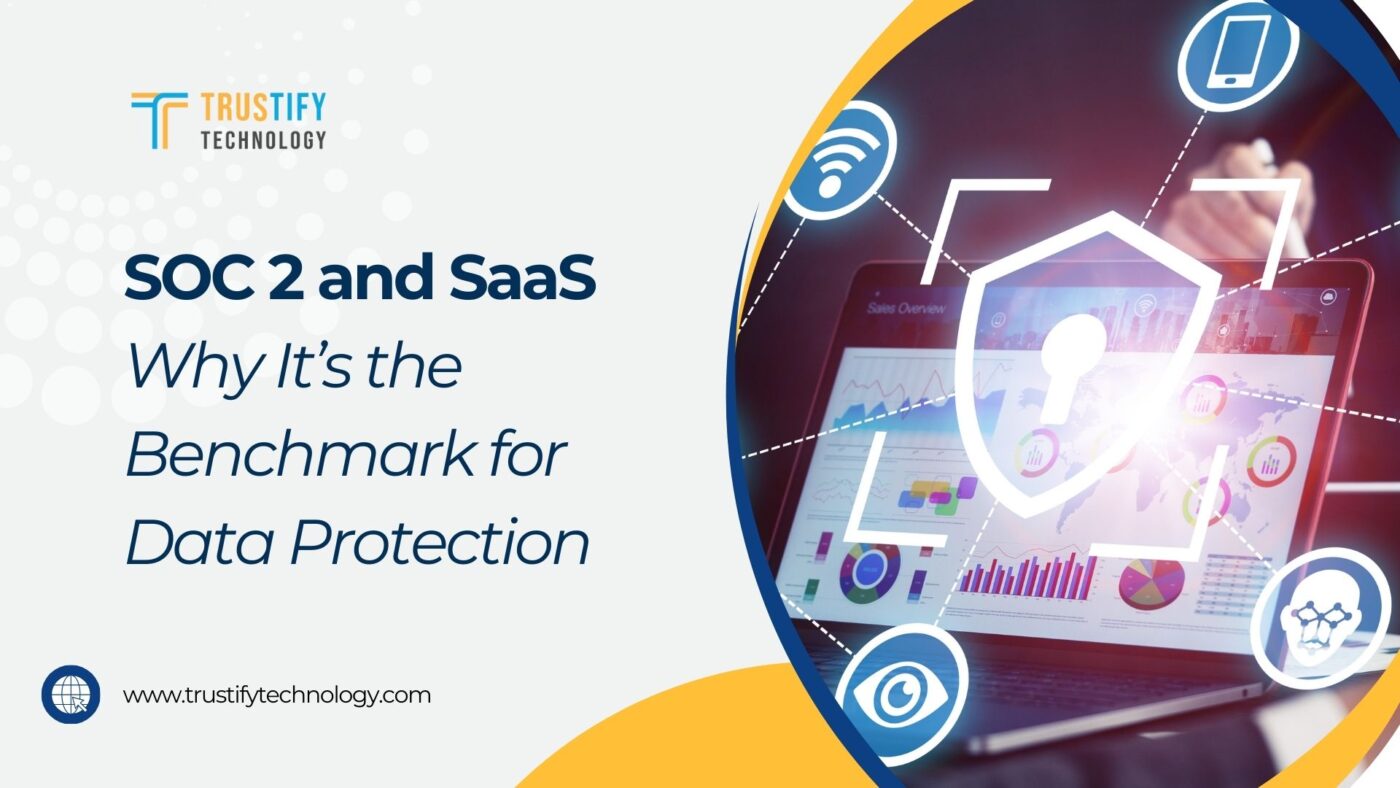When you want to ensure robust security for your SaaS product, SOC 2 compliance is a must-have. Developed by the American Institute of Certified Public Accountants (AICPA), SOC 2 sets clear guidelines for managing and protecting sensitive client data, especially if you provide cloud-based services.
Understanding SOC 2
SOC 2 (System and Organization Controls 2) is a comprehensive framework that defines how you should secure customer information. Independent third-party auditors evaluate your security controls against the AICPA’s Trust Services Criteria, which cover five key areas:
- Security
- Availability
- Processing Integrity
- Confidentiality
- Privacy
For example, if you run a cloud-based project management tool, passing a SOC 2 audit means you’ve met rigorous standards that assure your clients their project data is safe and always accessible.
Why It Matters for Your SaaS Businesses
Enhanced Credibility
Achieving SOC 2 compliance shows that you’re serious about protecting client data. This not only builds trust with your current and prospective clients but also positions you as a leader in data security. Imagine your potential customer choosing your service over competitors simply because your SOC 2 report proves your commitment to safeguarding their information.
Risk Mitigation
Preparing for a SOC 2 audit requires you to identify and fix security vulnerabilities. This proactive approach reduces your risk of data breaches and protects you from potential reputation and financial harm. For instance, if you’re integrating multiple third-party applications, SOC 2 standards help ensure that every integration is secure, minimizing unexpected security incidents.
Regulatory Compliance
Many industries are governed by strict data protection regulations such as HIPAA, GDPR, and GLBA. By adhering to SOC 2, you can align your operations with these legal requirements, lowering your risk of penalties. If you’re a healthcare SaaS provider, demonstrating SOC 2 compliance can be a key factor in meeting HIPAA standards.
Operational Excellence
The process of achieving SOC 2 compliance pushes you to adopt best practices in security and risk management. This not only streamlines your operations but also improves your overall internal controls. You may find that the discipline required to pass a SOC 2 audit translates into more efficient, reliable business practices.
Competitive Advantage
In a crowded market, a SOC 2 report can be a significant differentiator. When security-conscious clients review your services, they see that you’ve met rigorous standards for data protection. This advantage can help you secure more business, especially if your competitors lack a similar certification.
SOC 2 Compliance Shouldn’t Be A Challenge
Key Steps to Achieve SOC 2 Compliance
-
Define Your Scope
Start by clearly outlining the boundaries of your SOC 2 compliance efforts. Identify which systems, applications, data, and processes will be evaluated, and determine which of the Trust Services Criteria (TSC): security, availability, processing integrity, confidentiality, and privacy are most relevant to your business objectives.
For example, if you manage a SaaS customer support platform, you might include your ticketing system, customer database, and communication channels within the audit scope.
-
Conduct an Internal Risk Assessment
Perform a thorough internal evaluation to uncover potential security and privacy vulnerabilities within your systems. By assessing risks such as outdated software, unsecured data storage, or weak access controls, you can proactively address issues before they become critical.
Imagine reviewing your network infrastructure to identify unpatched vulnerabilities or areas where sensitive data might be at risk.
-
Implement Robust Controls
Based on your risk assessment findings, design and put in place security controls and policies that directly address these risks. This might include setting up strong access controls, encrypting data, establishing continuous monitoring systems, and creating a solid incident response plan.
For instance, if your risk assessment reveals that employee access is too broad, you can introduce role-based access controls to restrict data access to only those who need it.
-
Document Policies and Procedures
Create comprehensive and organized documentation of all your security policies, procedures, and practices. Make sure these documents are kept up-to-date and are easily accessible to everyone who needs them. This documentation serves as the tangible evidence of your compliance efforts during the audit process.
-
Engage a Third-Party Auditor
Select a reputable, independent auditor with expertise in helping you with the assessments. This auditor will review your controls, conduct interviews, and evaluate your documentation to determine if you meet the necessary standards.
If your company specializes in financial services, choose an auditor familiar with the TSC areas most critical to handling sensitive financial data.
-
Review Your SOC 2 Report
Once the audit is complete, you’ll receive a SOC 2 report. This could be a Type 1 report – assessing the design of your controls at a specific point in time – or a Type 2 report, which evaluates how effectively your controls function over a period. Use this report to understand your current compliance status and identify any areas needing improvement.
-
Remediate Any Gaps
Should the audit uncover any non-compliance issues, control deficiencies, or cybersecurity gaps, address them immediately. This might involve technical upgrades, updating documentation, enhancing employee training, or modifying workflows. Timely remediation not only improves your security posture but also builds greater trust with your clients
Build Trust and Strengthen Your SaaS Security
SOC 2 compliance isn’t just a checklist item – it’s a strategic investment in protecting your sensitive client data and demonstrating your commitment to the highest standards of security and privacy.
If you’re ready to strengthen your security posture, consider reaching out to a software vendor who can guide you through the process. By taking these steps, you’re not only protecting your business and your clients, but also setting the stage for a competitive edge in the market.


